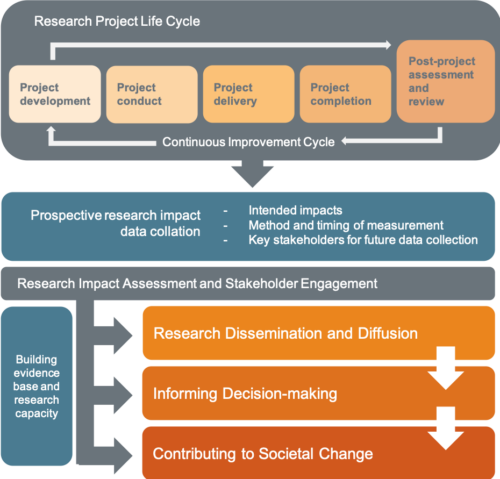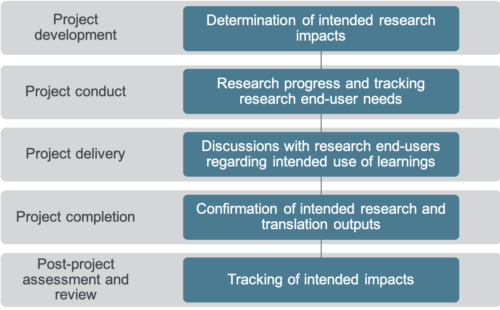WorkSafe Victoria (Australia) has a long history of research investment that has resulted in positive change for Victorian workers. WorkSafe identified a need to formally measure and evaluate the impact of their research program on internal policies, procedures and decision-making across the organisation, as well external impacts on systems, stakeholders and clients.
Working closely with WorkSafe, the Institute for Safety, Compensation and Recovery Research (ISCRR) developed a research impact assessment model based on the Institute for Work & Health’s Research Impact Framework, operationalising it to WorkSafe’s business context.
The ISCRR Research Impact Framework

The research impact journey starts when we design research. At this stage we define what the intended impact/s of the research will be. This is continued throughout the research project lifecycle and beyond to monitor and measure impacts as they occur. This prospective approach is preferred as it allows forward planning for collecting impact data in real-time, and improves recall from research end-users for how they have used the research and how it has affected them.

Impacts are categorised according:
- Research Dissemination and Diffusion: tracking where research findings are distributed, read and potentially used
- Informing Decision-making: identifying how research findings have been used and contributed towards changes in policy, practice and processes
- Contributing to Societal Change: measuring impacts at a societal level and determining what contribution the research played in driving these impacts and outcomes
Underpinning each impact level is the continual building of an evidence base and research capacity.
Research Impact Stories
To showcase impact successes, ISCRR has developed a series of research impact stories. These impact stories will continually be developed as further impacts are identified.
ISCRR Research Impact Story
The research goal: To reduce the risk of bitumen fume and associated substance exposure for road construction workers
Impacts achieved: Research evidence led to risk awareness and risk reduction initiatives
Read more


